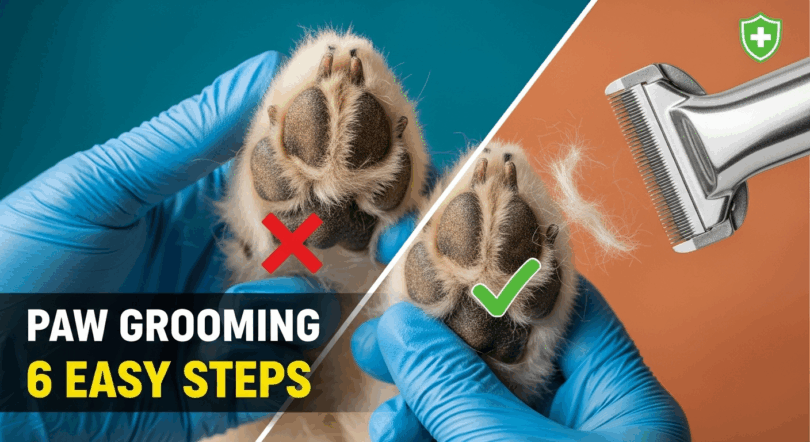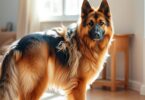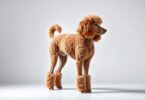Take great care of your dog by properly taking care of its paws. Daily exposure to different elements like dirt and gravel, salt, hot pavement, etc. exposes dog paws to them. Not only do you learn how to groom dog paws so as to keep them clean, but also avoid injuries, infections and discomfort.
Here, we are going to show you how to groom your dog by stepwise procedures to maintain its paws at a home without any risk.
Why Is Dog Paw Grooming Important?
It is necessary to know the reasons why we have to groom our dog paws, before getting into the details:
- Precautionary against matting and deposits of rubbish.
- Minimizes the exposure to infection.
- Enhances convenience at walking or running.
- Enables ones to see through development of cuts, ticks, or injuries early.
- Enhances grip in ill-flooring floors.
You can also bond with your owned dog by grooming the paws regularly and in doing so are also providing an avenue to build time together.
How Often Should You Groom Your Dog’s Paws?
The rate will vary according to the breed of your dog, his coat type and lifestyle.
As a General Rule:
- Playful dogs (daily walks, hiking) – once a month.
- Long haired types – once a week or once a fortnight.
- The dogs that will be inside the house- at least once a month.
The checking of the paws should be performed every day or after the outdoor activities to make sure that nothing dangerous is lodged between the pads.
Tools You’ll Need to Groom Dog Paws
Prepare The Grooming Tools That You Are Going to Need:
- Nail clippers or nail grinding tools of dogs.
- Fine grooming shears with a sharp end.
- Slicker brush or comb.
- Dog-safe moisturizer or paw balm.
- Dog shampoo (not obligatory to wash).
- Clean towel.
- Accidental nicks: styptic powder.
Step-by-Step Guide: How to Groom Dog Paws
Prepare Your Dog and Environment
The first step includes finding a very comfortable and quiet space that is well lit. Allow your dog to smell the tools and reward him or her with treats so that he or she gets comfortable. They can also be adjusted to being handled by simply rubbing their paws.
Pro Tip: In case of anxiety in your dog, you should have breaks or groom them one paw at a time.
Inspect the Paws Thoroughly
Check All Four Paws For:
- Cuts or abrasions
- Ticks or thorns
- Cracked or dry paw pads
- Infection Redness, swelling, or foul Odors.
Also, in case you see some abnormalities, visit your vet prior to grooming.
Trim Excess Hair Around the Paws
Clean the fur between the pads with a grooming sharp scissor, and around the edges.
This Helps:
- Prevent matting
- Keep debris from sticking
- Improve traction
Always make sure that you do not cut too close to the skin and always cut against the direction of the hair.
Clean the Paws
Wipe using wet cloth or pet-safe wipes. In case of excessively dirty paws, it is possible to clean them with a light dog shampoo and some lukewarm water.
- Keep dry, particularly between toes.
- Use no more than a wet towel so that the paws are not kept wet.
Trim the Nails
Nails grown out of proportion make your dog painful and alter the dog posture. Clip the nails with the use of dog nail trimming tools or grinders.
Tips for Nail Trimming:
- Trim a little at a time
- Keep off the quick (the pink part which has blood vessels)
- A nail grinder should be used in case your dog is afraid of clippers.
- Styptic powder, in case of bleeding.
Time: After every 3-4 weeks or when you hear the nails clicking on the floor.
Moisturize the Paw Pads
Split and dry paw pads are painful. Apply a paw balm or moisturizer to dogs to ensure they are soft and healthy.
- Use little and rub it into the skin.
- Keep your dog off till it eats.
- Do not use human lotions -they are poisonous to the dogs.
Seasonal Paw Grooming Tips
Summer Paw Care
- Do not use hot pavement be sure with your hand.
- Use paw wax for protection
- Examine foxtails or burrs following walks.
Winter Paw Care
- Removal of ice, salt and chemicals.
- Use booties for extreme cold.
- Use paw balm after and before walks.
Common Dog Paw Problems to Watch Out For
Being aware of what to expect will make you identify problems at hand.
Cracked Pads
This is often brought about by dryness or coarse surfaces. Use moisturizers regularly.
Interdigital Cysts
Puffy bumps in between the toes. May need veterinary care.
Yeast Infections
The effects are redness, itchiness and foul odor. Needs to be treated with medication.
Overgrown Nails
May result in splayed toes or difficulty in walking.
Matted Fur
Captures dust and is irritating. This is avoided by regular trimming.
How to Train Your Dog to Enjoy Paw Grooming
There are a lot of dogs that are fussy about their feet.
The Following is the Way to Make Paw Grooming a Good Activity:
- Begin when they are a puppy, at least.
- Positive reinforcement (treats, praise) should be used.
- Keep sessions short and calm.
- Gradually introduce tools.
- Play i.e. touch their paws.
- It is important to be constant and patient.
When to Seek Professional Grooming or Veterinary Help
Although the majority of grooming of the paws can be performed at home, professional assistance is needed in the Case of:
- Your dog has severe matting
- There is evidence of infection or limping.
- You do not like trimming nails.
- Your dog gets violent or nervous.
- Groomers are taught how to deal with problematic cases.










Leave a Comment